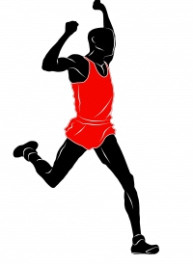 Runners have the potential for several different types of injuries from bone fractures, sprains, strains and tears. One that is common are hip groin running strains.
Runners have the potential for several different types of injuries from bone fractures, sprains, strains and tears. One that is common are hip groin running strains.
Avid runners and joggers love their sport. They run in all types of weather, under conditions that most athletes wouldn’t consider participating in. And yet, it is just these conditions that put runners at greater risk than they would normally be for a hip groin running strain.
These types of strains affect the adductor muscles which are located on the inner thigh. They are responsible for bringing the legs together and stabilizing the hips. There are actually 6 different muscles that make up the adductor muscle group. These muscles act in a fan like fashion to fully stabilize the hip and allow the leg to have a full circular range of motion.
People who experience this type of injury may find that the pain is immediate after a specific movement or that there is chronic discomfort that results in immediate pain with just the slightest wrong move.
A hip groin running strain is often graded by the physician who evaluates the athlete. These evaluations are beneficial when the tear is grade 2 or greater and you feel you may need physical therapy for rehabilitation. Evaluation and rehabilitation with a physical therapist can improve your chances of a successful healing and return to athletic activity.
 One way of confirming your hip strain is to test it at home with a stretch or contraction. Using a slight stretch: sit on the floor with the soles of your feet together and legs apart. Is there pain as you progressively push down through the knees?
One way of confirming your hip strain is to test it at home with a stretch or contraction. Using a slight stretch: sit on the floor with the soles of your feet together and legs apart. Is there pain as you progressively push down through the knees?
Using resistance to contraction place a firm object, like a ball, between your knees and squeeze. If this hurts as well it’s a strain or chronic injury to the adductor muscles.
Help the healing process by laying off of the activities that cause a painful response and incorporate ice and rest into your rehabilitation. Ice the area that hurts 3 times a day for 20 minutes to help decrease the inflammation and help the muscles to heal faster.
You can also help to heal faster through self cross friction massage. Using a moisturizer to help your hands glide across your skin massage at a 90 degree angle to the way the muscle runs. In other words, massage your muscle from side to side instead of up and down the leg. This will help to decrease the amount of scar tissue that forms as the muscle tears heal.
Once the pain begins to decrease, begin to incorporate stretches into your daily routine to help the muscles to stretch as they heal. This stretching will also help decrease the adhesions or scars that form as the muscle heals. This will also help increase the range of motion in those muscles to decrease the probability that this injury will happen again.
Gradually increase your activity from this hip groin running strain being mindful of any pain or symptoms that return. The best way to improve your rehabilitation is prevention of another strain. Continue your stretches and strengthening to help prevent this strain from happening again.
Resources:
Active: 5 Common Hip Injuries You Can fix
http://beta.active.com/running/Articles/5-Common-Hip-Injuries-You-Can-Fix
Runners World: Runner’s Guide to the Psoas
http://www.runnersworld.com/injury-treatment/runners-guide-psoas
American Running Association: Groin Pain, Starting After a Run
http://www.americanrunning.org/w/article/the-clinic-groin-pain-starting-after-a-run
Core Performance: The Complete Guide to Groin Strains
http://www.coreperformance.com/knowledge/injury-pain/groin-strain.html
Beginner Triathlete: Common Causes of Hip and Pelvic Pain in Runners
http://www.beginnertriathlete.com/cms/article-detail.asp?articleid=1383
Sports Injury Clinic: Buttock, Hip and Groin Pain
http://www.sportsinjuryclinic.net/sport-injuries/hip-groin-pain


Leave a Reply